Can southern Brazil’s deadly floods spur the shift to green energy?
November 14, 2024
Beside a narrow canal that runs through the outskirts of Porto Alegre in southern Brazil, a row of wooden houses with makeshift fences lean among piles of debris and power poles tangled in sagging wires. From the dirt road, Alexandra Marina Romero, 27, gazes at the aftermath of a disaster. “There used to be a church here,” she says. “Now it’s all gone.”
In May, a devastating flood ravaged her neighbourhood, leaving a trail of chaos and triggering a humanitarian crisis. “What we went through was horrific. The water took over everything,” says Romero, a supermarket assistant who migrated to Brazil from Venezuela in 2018.
She lost all of her possessions in the disaster and now fears moving again in search of a safer home. “I cried a lot. Sometimes I fear a new flood. It’s something we would never have imagined happening,” Romero says.

In the past year, Brazil’s southernmost state of Rio Grande do Sul has faced one of the worst environmental catastrophes in Brazil’s recent history. A series of unprecedented floods affected more than 2 million people in 95% of its municipalities and displaced more than 420,000, according to the UN’s refugee agency, UNHCR.
In the worst incident last May, 183 people died, 27 are still missing and 806 were injured. Many residents lost their houses entirely as streets turned into rivers. Six months later, nearly 1,800 people are still unable to return home, and are living in 40 shelters in 23 different cities, the UNHCR says.
The floods may have cost the Brazilian economy 97bn reais (£13bn), with damages of R$58bn just in Rio Grande do Sul.
As the effects of the climate crisis are increasingly felt in South America, state authorities are urgently seeking to adapt and mitigate the risks of floods and extreme weather events in a region where the number of days of extreme rainfall has more than doubled since the 1960s.

Southern Brazil – like the rest of the country – is an outstanding model of adopting clean energy. According to the energy ministry’s report last year on the National Energy Balance, more than 80% of Brazil’s electricity already comes from renewables: 58.6% is provided by hydroelectric plants, wind power has grown to 17.6% and now provides as much energy as fossil fuels , while 5.7% of energy comes from solar.
However, Rio Grande do Sul is one of the three states in Brazil that still rely on coal for energy, and the state government sees the floods as an opportunity to expand green initiatives to boost a struggling economy – it is estimated to decline by almost 10% in 2024, decreasing Brazil’s GDP by 1%.
In October, Rio Grande do Sul’s governor, Eduardo Leite, launched a Just Energy Transition Plan for the state, including green hydrogen (H2V) plants and the state’s first offshore windfarm to support the shift to renewable energy and foster economic growth, especially in communities that still rely on coal.
Key targets of the plan include reaching net-zero emissions by 2050 and ensuring sustainable development for local communities.
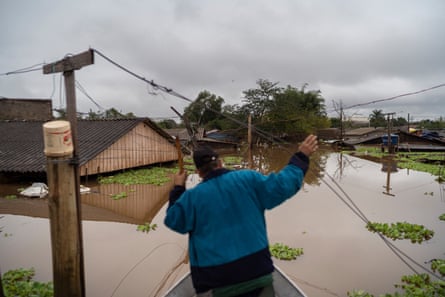
According to officials, the state assembly could vote on the energy transition plan within a year. Marjorie Kauffmann, state environment secretary, says the disaster has created a rare sense of unity around the energy transition policy put forward in the middle of the electoral term.
“In 2023, our government adopted a systemic strategy to move towards renewable energy solutions. After the floods, I felt we had found a big point of common agreement with society to find climate solutions,” she says.
The state government says investments in green hydrogen, offshore wind power and biofuels could be crucial to the region’s economy. A McKinsey study last year suggested that green hydrogen could bring R$62bn and 41,000 new jobs to Rio Grande do Sul by 2040.
A recent World Bank report also suggested that southern Brazil’s offshore windfarms had the potential to produce 660GW of electricity – roughly the equivalent of the world’s total new photovoltaic capacity this year.
The country has 97 offshore wind projects being developed, including 27 in Rio Grande do Sul.
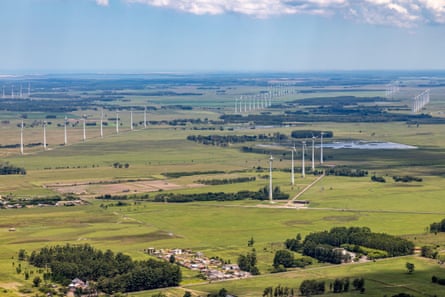
Leite, who made a bid to run for Brazil’s presidency in 2022, believes market liberalisation will boost the region’s energy sector. He plans to allocate public funds to spur the construction of offshore windfarms and component plants to attract investment and new competitors.
“Transitioning to renewable energy sources requires significant investment, but the technology is still in its early stages, which makes investors cautious,” Leite acknowledges.
Leite hopes to help communities that are heavily reliant on coal to transition into new jobs and a more sustainable economy. He says: “81% of our energy production is renewable, but there is still a part being produced by coal-fired power plants, and we know that has to end.

“Still, if you don’t create new economic prospects, there will be no political or social capital to support the transition.”
According to Caarem Studzinski, a partner at Aeroespacial, a wind and solar power consultancy, states that secure these investments are more likely to improve job opportunities and encourage sustainable development.
“The state will have cheaper energy produced locally, which will also encourage the regional economy,” Studzinski says.
Daniela Cardeal, head of the renewable energy industry employers’ union SindiEnergia, which is also in talks with the government to integrate more clean energy sources into the power grid, says southern Brazil has a long “interconnection queue” of projects undergoing impact assessments before construction begins.
“Wind-power prices are still too low, which does not help to attract new projects. But our market is experiencing an exciting moment for new, sustainable power technologies,” she says. “We have to take on this opportunity and start thinking how this can help to revamp our state in two to five years.”
If the transition plan succeeds, Rio Grande do Sul could become a global benchmark for renewables. The state already accounts for 27% of Brazil’s biofuel production.
Renewables also help to decarbonise agribusiness – one of the region’s most polluting industries. Domingos Lopes, vice-president of the state’s agriculture federation, Farsul, says he is optimistic about the transition.
“Brazil can be a low-carbon agriculture player, and Rio Grande do Sul is its best example. All those policies would consolidate our sustainable agriculture. So we see them as a great opportunity.”
However, the Brazilian congress has yet to vote on a bill to establish a new legal framework and regulate energy transition projects, leading many investors to hold off on their most ambitious plans.
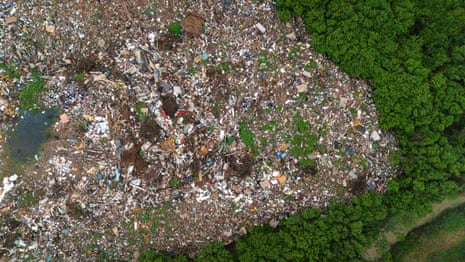
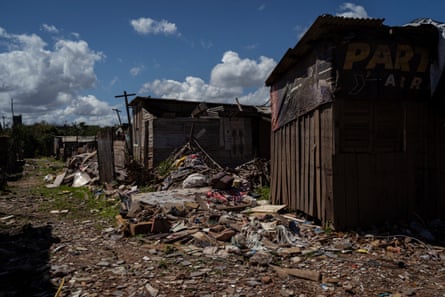
Even if experts agree that the Green New Deal promised by the Brazilian president, Luiz Inácio Lula da Silva, could increase local GDP and reduce dependency on agriculture and livestock, many fear that the push for renewables could divert attention from pressing social problems. Campaigners stress that people displaced by the floods are still in need of government help.
“Six months after the floods, the situation has become even more critical. The houses, most of which were in a very precarious condition, are destroyed,” says Gabriela Barreto, a campaigner with SOS Children’s Villages. “The dark, polluted water spills into the streets with every heavy rain, debris and garbage forming a cruel reminder of the disaster.”
Pablo Mattos, of the UNHCR, says the scale of the catastrophe is the biggest challenge. “The floods affected almost every municipality, many communities, many social layers,” he says. “It is a major hurdle.”
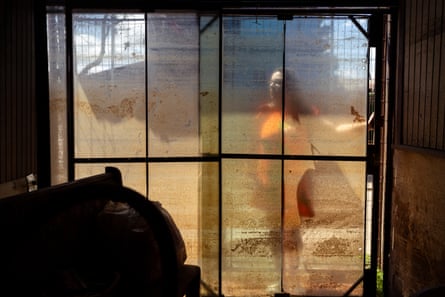
The federal and state governments have accelerated measures to help flood victims. In September, the federal government said it had already invested R$98.7bn in the emergency response to rebuild infrastructure and support people and businesses in Rio Grande do Sul.
The state authorities have also allocated more than R$2.4bn to hundreds of projects, including housing in safer areas for those who were displaced.
Nevertheless, in Porto Alegre and inland cities affected by the flood, such as Canoas, São Leopoldo, Muçum, Roca Sales, Cruzeiro do Sul and Caxias do Sul, thousands of people continue to live in flood-risk areas.
Quietly defiant, Kellen Lopes Costa, 38, is rebuilding her life a few blocks from a canal in Porto Alegre that overflowed in May, the house her family had built and her small beauty salon.
She says she still has nightmares about when the murky water swept into her home, and she and her husband had to flee with just a bag of clothes for their two children.
“It’s harrowing to lose all that we worked for our entire lives,” she says. “But we keep fighting to recover. We do it for our children.”
Search
RECENT PRESS RELEASES
Related Post



